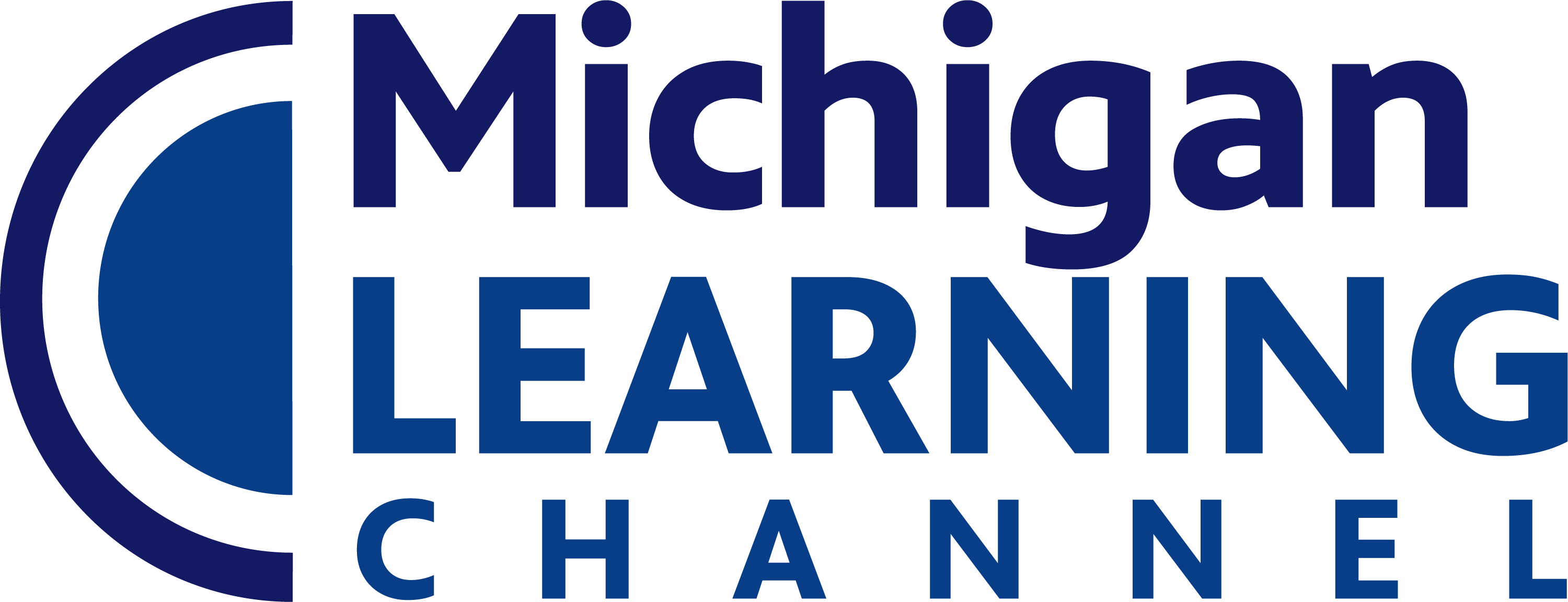Subjects
Shows
Analyze sovereignty of tribal governments in interactions with U.S. governments, including treaty formation, implementation, and enforcement between federal, state, and local [...]
Evaluate the major sources of revenue and expenditures for state, local, and tribal governments.
Describe and evaluate referendums, initiatives, and recall as mechanisms used to influence state and local government. Use a case study [...]
Describe the evolution of political parties and their contemporary influence on public policy.
Evaluate the historical impact of the Progressive Era with regard to governmental and industrial reforms.
Women’s Suffrage – Analyze the successes and failures of efforts to expand women's rights, including the work of important leaders [...]
United States and the Course of World War II – evaluate the role of the United States in fighting the [...]
Responses to Genocide – investigate the responses to Hitler’s “Final Solution" policy by the Allies, the U.S. government, international organizations, [...]
End of the Cold War – describe the factors that led to the end of the Cold War.
Comparing Domestic Policies – focusing on causes, programs, and impacts, compare and contrast President Franklin Roosevelt’s New Deal initiatives, President [...]
Domestic Conflicts and Tensions – analyze and evaluate the competing perspectives and controversies among Americans generated by U.S. Supreme Court [...]
Ideals of the Civil Rights Movement – compare and contrast the ideas in Martin Luther King’s March on Washington speech [...]
Women’s Rights – analyze the causes, course, and reaction to the women’s rights movement in the 1960s and 1970s.
Civil Rights Expanded – evaluate the major accomplishments and setbacks in securing civil rights and liberties for all Americans over [...]
Tensions and Reactions to Poverty and Civil Rights – analyze the causes and consequences of the civil unrest that occurred [...]
Economic Changes – using the changing nature of the American automobile industry as a case study, evaluate changes in the [...]
United States in the Post-Cold War World – explain the role of the United States as a superpower in the [...]
9/11 and Responses to Terrorism – analyze how the attacks on 9/11 and the response to terrorism have altered American [...]
Make a persuasive argument on a public policy issue, and justify the position with evidence from historical antecedents and precedents, [...]
Describe, compare, and contrast political philosophers views on purposes of government(s) including but not limited to Aristotle, Locke, Hobbes, Montesquieu, [...]
Identify, provide examples of, and distinguish among different systems of government by analyzing similarities and differences in sovereignty, power, legitimacy, [...]
Compare, contrast, and evaluate models of representation in democratic governments including presidential and parliamentary systems.
Compare and contrast federal, confederal, and unitary systems of government by analyzing similarities and differences in sovereignty and distribution of [...]
Analyze the historical and philosophical origins of American Constitutional Democracy and analyze the influence of ideas found in the Magna [...]
Increasing Global Interconnections – describe the increasing global interconnections and new global networks that resulted in the spread of major [...]
Comparing Political Revolutions and/or Independence Movements – compare and contrast the American Revolution, the French Revolution, and one other revolution [...]
Growth of Nationalism and Nation-States – compare and contrast the rise of nation-states in a western and non-western context.
Industrialization – compare and contrast the causes and consequences of industrialization around the world, including social, economic, and environmental impacts.
Imperialism – analyze the political, economic, and social causes and consequences of imperialism in different regions.
Power and Resistance – describe the global reconfigurations and restructuring of political and economic relationships throughout the 20th century and [...]
Global Conflict – compare and contrast the nature, extent, and impact of modern warfare with warfare in the previous eras, [...]
Genocide in the 20th Century – differentiate genocide from other atrocities and forms of mass killing and explain its extent, [...]
Technological, Scientific, and Cultural Exchanges – describe significant technological innovations and scientific breakthroughs in transportation, communication, medicine, and warfare and [...]
World War I – explain the causes, characteristics, and long-term consequences of World War I, including the major decisions of [...]
Interwar Period – analyze the transformations that shaped world societies between World War I and World War II, including the [...]
World War II – analyze the causes, course, characteristics, and consequences of World War II, including the emergence the United [...]
Cold War Conflicts – analyze the causes and consequences of major Cold War conflicts, including the global reconfigurations and restructuring [...]
Revolution, Decolonization, and Democratization – evaluate the causes and consequences of revolutionary and independence movements in different world regions.
Case Studies of Genocide – analyze the development, enactment, and consequences of, as well as the international community's responses to, [...]
Using the American Revolution, the creation and adoption of the Constitution, and the Civil War as touchstones, develop and argument [...]
Analyze how the changing character of American political society from 1791 to 1877 significant impact on the responsibilities of governments [...]
Labor’s Response to Industrial Growth – evaluate the different responses of labor to industrial change, including the development of organized [...]
Describe the extent to which industrialization and urbanization between 1895 and 1930 created the need for progressive reform.
Analyze the social, political, economic, and cultural changes that occurred during the Progressive Era.
Growth and Interactions of World Religions – analyze the significance of the growth of and interactions between world religions.
Intensifying Trade Networks and Contacts – compare and contrast the development, interdependence, specialization, and importance of interregional land-based and sea-based [...]
Growth of Islam and Dar al-Islam (a country, territory, land, or abode where Muslim sovereignty prevails) - explain the significance [...]
Unification of Eurasia under the Mongols – analyze the significance of Mongol rule in Afro-Eurasia and the impact of the [...]
Spheres of Interaction and Influence in the Americas – compare and contrast the diverse characteristics and interactions of peoples in [...]
Subjects
Shows
Analyze sovereignty of tribal governments in interactions with U.S. governments, including treaty formation, implementation, and enforcement between federal, state, and local [...]
Evaluate the major sources of revenue and expenditures for state, local, and tribal governments.
Describe and evaluate referendums, initiatives, and recall as mechanisms used to influence state and local government. Use a case study [...]
Describe the evolution of political parties and their contemporary influence on public policy.
Evaluate the historical impact of the Progressive Era with regard to governmental and industrial reforms.
Women’s Suffrage – Analyze the successes and failures of efforts to expand women's rights, including the work of important leaders [...]
United States and the Course of World War II – evaluate the role of the United States in fighting the [...]
Responses to Genocide – investigate the responses to Hitler’s “Final Solution" policy by the Allies, the U.S. government, international organizations, [...]
End of the Cold War – describe the factors that led to the end of the Cold War.
Comparing Domestic Policies – focusing on causes, programs, and impacts, compare and contrast President Franklin Roosevelt’s New Deal initiatives, President [...]
Domestic Conflicts and Tensions – analyze and evaluate the competing perspectives and controversies among Americans generated by U.S. Supreme Court [...]
Ideals of the Civil Rights Movement – compare and contrast the ideas in Martin Luther King’s March on Washington speech [...]
Women’s Rights – analyze the causes, course, and reaction to the women’s rights movement in the 1960s and 1970s.
Civil Rights Expanded – evaluate the major accomplishments and setbacks in securing civil rights and liberties for all Americans over [...]
Tensions and Reactions to Poverty and Civil Rights – analyze the causes and consequences of the civil unrest that occurred [...]
Economic Changes – using the changing nature of the American automobile industry as a case study, evaluate changes in the [...]
United States in the Post-Cold War World – explain the role of the United States as a superpower in the [...]
9/11 and Responses to Terrorism – analyze how the attacks on 9/11 and the response to terrorism have altered American [...]
Make a persuasive argument on a public policy issue, and justify the position with evidence from historical antecedents and precedents, [...]
Describe, compare, and contrast political philosophers views on purposes of government(s) including but not limited to Aristotle, Locke, Hobbes, Montesquieu, [...]
Identify, provide examples of, and distinguish among different systems of government by analyzing similarities and differences in sovereignty, power, legitimacy, [...]
Compare, contrast, and evaluate models of representation in democratic governments including presidential and parliamentary systems.
Compare and contrast federal, confederal, and unitary systems of government by analyzing similarities and differences in sovereignty and distribution of [...]
Analyze the historical and philosophical origins of American Constitutional Democracy and analyze the influence of ideas found in the Magna [...]
Increasing Global Interconnections – describe the increasing global interconnections and new global networks that resulted in the spread of major [...]
Comparing Political Revolutions and/or Independence Movements – compare and contrast the American Revolution, the French Revolution, and one other revolution [...]
Growth of Nationalism and Nation-States – compare and contrast the rise of nation-states in a western and non-western context.
Industrialization – compare and contrast the causes and consequences of industrialization around the world, including social, economic, and environmental impacts.
Imperialism – analyze the political, economic, and social causes and consequences of imperialism in different regions.
Power and Resistance – describe the global reconfigurations and restructuring of political and economic relationships throughout the 20th century and [...]
Global Conflict – compare and contrast the nature, extent, and impact of modern warfare with warfare in the previous eras, [...]
Genocide in the 20th Century – differentiate genocide from other atrocities and forms of mass killing and explain its extent, [...]
Technological, Scientific, and Cultural Exchanges – describe significant technological innovations and scientific breakthroughs in transportation, communication, medicine, and warfare and [...]
World War I – explain the causes, characteristics, and long-term consequences of World War I, including the major decisions of [...]
Interwar Period – analyze the transformations that shaped world societies between World War I and World War II, including the [...]
World War II – analyze the causes, course, characteristics, and consequences of World War II, including the emergence the United [...]
Cold War Conflicts – analyze the causes and consequences of major Cold War conflicts, including the global reconfigurations and restructuring [...]
Revolution, Decolonization, and Democratization – evaluate the causes and consequences of revolutionary and independence movements in different world regions.
Case Studies of Genocide – analyze the development, enactment, and consequences of, as well as the international community's responses to, [...]
Using the American Revolution, the creation and adoption of the Constitution, and the Civil War as touchstones, develop and argument [...]
Analyze how the changing character of American political society from 1791 to 1877 significant impact on the responsibilities of governments [...]
Labor’s Response to Industrial Growth – evaluate the different responses of labor to industrial change, including the development of organized [...]
Describe the extent to which industrialization and urbanization between 1895 and 1930 created the need for progressive reform.
Analyze the social, political, economic, and cultural changes that occurred during the Progressive Era.
Growth and Interactions of World Religions – analyze the significance of the growth of and interactions between world religions.
Intensifying Trade Networks and Contacts – compare and contrast the development, interdependence, specialization, and importance of interregional land-based and sea-based [...]
Growth of Islam and Dar al-Islam (a country, territory, land, or abode where Muslim sovereignty prevails) - explain the significance [...]
Unification of Eurasia under the Mongols – analyze the significance of Mongol rule in Afro-Eurasia and the impact of the [...]
Spheres of Interaction and Influence in the Americas – compare and contrast the diverse characteristics and interactions of peoples in [...]


